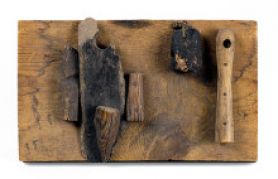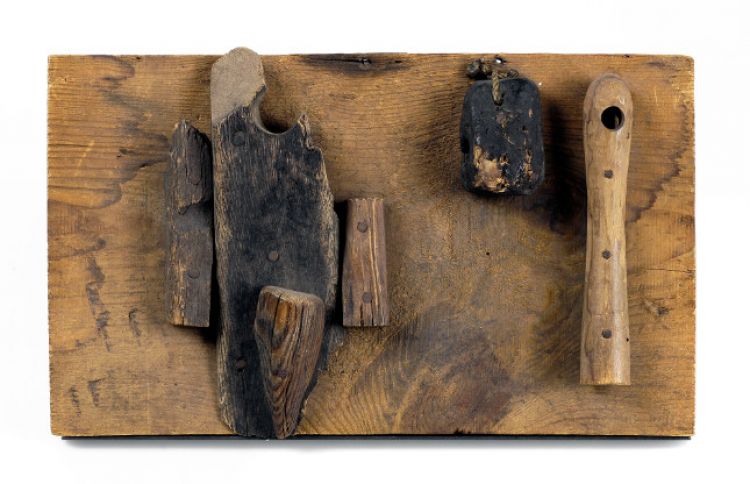Castaway's Kit

Jean Arp, a founding member of the Dada group in Zurich in 1916, close to the Surrealists, is a singular figure in modern art. He claimed responsibility for the break with mimetic art, rejecting a traditional conception of art, in which the artist imposed his gaze on the world. Arp gives man a more modest place, more in harmony with nature. He wants his reliefs and sculptures, in which the human and the organic merge, "to integrate naturally with nature", to be "as concrete and sensual as a leaf or a stone".
The Castaway's Kit, a pendant of which is kept at the National Museum of Modern Art in Paris, is a sculpture made with driftwood collected from the beach. The artist has fixed to a board a few rudimentary manmade objects (a tool handle, a float, a wedge) their shapes fashioned by the elements. He transforms this assemblage into a work of art, giving it a malicious title.
This artistic gesture affirms one of Arp's recurring themes: the superiority of nature over all human productions. These two panels to some extent mark the end of his Dada reliefs and announce the new Surrealist reliefs, in which he deploys the poetic forms of his language-object.
This emblematic work comes from the personal collection of the poet and friend of Arp Tristan Tzara, and was probably produced in collaboration with Kurt Schwitters. It was chosen by André Breton to appear in the Exhibition of Surrealist Objects presented at the Ratton Gallery in 1936.
